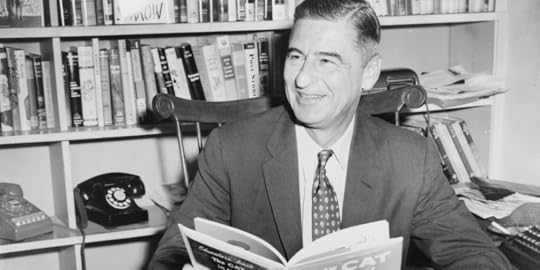Bathroom Readers' Institute's Blog, page 63
April 7, 2017
Rock Stars Who Nearly Died on Stage

It’s supposed to be easy: You get up on that stage, sing some songs, and soak up the adulation. But out of the thousands of rock concerts ever staged, a few have taken a turn for the worst.
Patti Smith
Patti Smith and her band were serving as the opening act for Bob Seger on his 1977 tour. While performing in Tampa, Smith fell off the stage. Like Zappa, she fell into the orchestra pit, a drop of 15 feet onto hard concrete. She was nearly paralyzed, having broken several vertebrae in her neck. Smith ultimately fully recovered, but only after months of physical therapy.
Thom Yorke
In 1993, Radiohead performed a set of songs at MTV’s Beach House. (Every summer, the network used to broadcast from a beach house in a sunny locale.) Radiohead played its song “Anyone Can Play Guitar” surrounded by fans and right next to a swimming pool. Toward the end of the song, lead singer Thom Yorke abruptly jumped into that pool while the band played on. Then he climbed out of the pool and tried to resume singing by grabbing a microphone on the ground…a live, electrically wired microphone. A fast-thinking observer quickly kicked it away, because if the soaking-wet Yorke had grabbed it, he likely would’ve been electrocuted.
Krist Novoselic
Another big star almost accidentally did himself in with MTV’s cameras rolling. Nirvana played at the 1992 Video Music Awards. During their performance of their hit “Lithium,” bassist Krist Novoselic did a stunt he often did: throwing his instrument up in the air as high as he could, and then catching it when it came back down. Except that this time he didn’t catch. It landed on his head. He went down hard and had to seek hospitalization.
Frank Zappa
Frank Zappa and his band the Mothers of Invention were playing in a theater in London in 1971. And then a man suddenly rushed the stage and pushed Zappa into the orchestra pit. That’s a long fall, and Zappa was roughed up pretty bad: His larynx was crushed, his chin was gashed, he broke a rib, and his leg fractured. He had to use a wheelchair for a year. So why’d the guy do it? He thought Zappa was checking out his girlfriend from the stage.
The post Rock Stars Who Nearly Died on Stage appeared first on Trivia Books and Facts | Uncle John's Bathroom Reader.
R.IP., Ya Hockey Puck
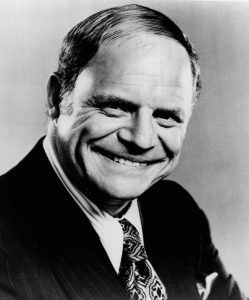
Don Rickles has died at the age of 90. A fixture in movies, the stand-up circuit, the Johnny Carson-era Tonight Show, and the stages of Las Vegas casinos, Rickles was nicknamed “The Merchant of Venom” because he was the master of insult comedy. By all accounts, it was all just an act, and he was a kind and generous man off-stage. Here are a few stories about the legendary comedian.
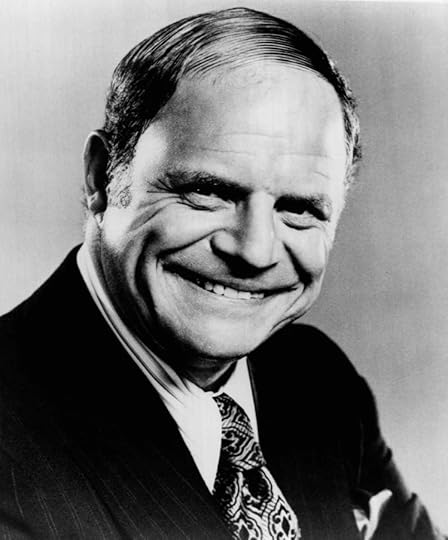
Rickles’ best known insult is a bit of a head-scratcher: He would insult and summarily dismiss someone by calling them “a hockey puck.” (It’s a phrase with which Rickles is so strongly associated that he even said it when he voiced Mr. Potato Head in Toy Story—to an actual hockey puck.) Sure, it sounds mean and nasty, but what does it mean? It’s a combination of nothing at all, and Rickles not being able to recall how he came up with it. Rickles prided himself on his ability to use wit and wordplay to get laughs, and never used profanity. But when he starting out playing seedy clubs and bars in the 1940s and ‘50s, he got frustrated with the characters he’d meet and perform for in such places that one night be blurted out, “Will you shut up? You’re a real hockey puck.” Rickles couldn’t remember why exactly he said “hockey puck,” only that it had the sound and rhythm of swear words…without actually being swear words.
From then on, Rickles would happily sign hockey pucks for fans that approached him, but oddly enough, he wasn’t much of a hockey fan—he was a baseball guy, and he particularly loved the Los Angeles Dodgers. Rickles was close friends with the team’s longtime manager, Tommy Lasdorda, and on occasion he even got to sit in the team’s dugout during games. In a meaningless late season game in 1977 (the Dodgers had already clinched their divisional championship), Lasorda let Rickles replace a pitcher. So, Rickles headed out to the mound and told the very confused pitcher to leave the field. Rickles later said that the pitcher got very angry, yelling out “You’re not the manager! You’re not even a coach! You can’t pull me out of the game!” When the home plate umpire noticed the confrontation, he too approached the mound. His reaction: “Don Rickles! Don, any chance of getting me two tickets to see Dean Martin in Vegas?”
Rickles worked up almost to the end of his life. He left behind a 10-episode TV interview series. Dinner with Don, produced by AARP, depicts the late comedian having dinner with comedians like Jimmy Kimmel, Amy Poehler, Sarah Silverman, and Zach Galifianakis…and then giving them roasting them, Rickles style.
The post R.IP., Ya Hockey Puck appeared first on Trivia Books and Facts | Uncle John's Bathroom Reader.
March 28, 2017
Infamous Weapons
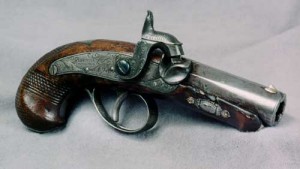
We couldn’t find Uncle John’s old Fart Bazooka, but we managed to find some other famous weapons.
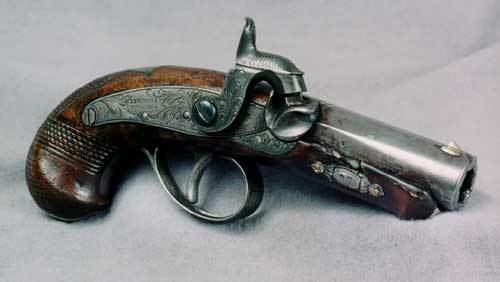
John Wilkes Booth’s Gun
The gun that Booth used to assassinate President Abraham Lincoln now resides in the basement museum of Ford’s Theatre, in Washington, D.C. The gun is a single-shot flintlock, made by Philadelphia gunsmith Henry Derringer. It’s tiny—just six inches total in length with a 2-1/2″ barrel—but it’s powerful, firing a .44- caliber bullet. The gun was found on the floor of the theater box where Lincoln sat. Also in the museum is the knife with which Booth stabbed one of Lincoln’s companions, Major Henry Rathbone, in the arm before Booth jumped from the box to escape. What about the bullet that killed one of the most revered figures in American history? You can see that, too. It was removed during a post-mortem autopsy and was kept by the U.S. War Department until 1940, when it went to the Department of the Interior. It can be viewed today at the National Museum of Health and Medicine in Washington, D.C.
The Sarajevo Pistol
On June 28, 1914, Gavrilo Princip shot and killed the heir to the Austro-Hungarian throne, Archduke Franz Ferdinand, and his wife, Sophie, in Sarajevo, Bosnia. The assassinations caused a chain reaction of events, which, within less than five weeks, led to the start of World War I. The gun was a Browning semiautomatic pistol, model M1910, serial #19074. Princip, just 19, was a member of the Serbian nationalist group called the Black Hand. He fired seven shots into the royal couple’s car from five feet away, then attempted to shoot himself, but was stopped by passersby and quickly arrested. Princip died in prison of tuberculosis in 1918 (the disease was one reason he took the mission).
After his trial, the pistol was presented to Father Anton Puntigam, the Jesuit priest who had given the archduke and duchess their last rites. He hoped to place it in a museum, but when he died in 1926 the gun was lost…for almost 80 years.
In 2004 a Jesuit community house in Austria made a startling announcement: they had found the gun (verified by its serial number). They donated it to the Vienna Museum of Military History in time for the 90th anniversary of the assassination that started a war that would eventually kill 8.5 million people. Also in the museum are the car in which the couple were riding, the bloodied pillow cover on which the archduke rested his head while dying, and petals from a rose that was attached to Sophie’s belt.
The Mussolini Machine Gun
On April 28, 1945, Italian dictator Benito Mussolini and his mistress, Claretta Petacci, were captured while trying to flee into Switzerland. They were executed by an Italian communist named Valter Audisio, who shot the pair with a French-made MAS (Manufacture d’Armes de St. Etienne) 7.65mm submachine gun.
The gun disappeared until 1973, when Audisio died. He’d kept it in Italy until 1957, when, during a resurgence of Mussolini’s popularity, he secretly gave it to the communist Albanian government for safekeeping. With Audisio’s death, the Albanians proudly displayed the gun “on behalf of the Italian people.” Its home is now Albania’s National Historical Museum. Audisio once wrote that the only reason he used the machine gun was that the two pistols he tried to use had jammed. He also said that he had no orders to shoot Petacci—but she wouldn’t let go of Il Duce.
The post Infamous Weapons appeared first on Trivia Books and Facts | Uncle John's Bathroom Reader.
Animal Heroes

Be kind to animals—the life they save may be…yours.
Captain Kangaroo
In 2003 Leonard Richards, 52, was checking his Tanjil South, Australia, emu farm for storm damage when a tree branch came crashing down on his head and knocked him out. Luckily for Richards, Lulu, his pet kangaroo who “thinks she’s a dog,” was following him. A short time later, Lynn, Richards’s wife, heard furious barking outside. When she opened her door, she instantly knew something was wrong. She followed the barks and found Lulu standing over her unconscious master. Help was called in and Richards was airlifted to a hospital in Melbourne, where he made a full recovery. For her part, Lulu became the first kangaroo to receive the National Animal Valor Award from the RSPCA. “I’d be pushing up daisies if it wasn’t for Lulu,” said Richards.
Champion Chihuahua
While one-year-old Booker West was happily splashing his hands in a birdbath in his yard in Masonville, Colorado, Zoey, the family’s Chihuahua, was keeping guard. Good thing, too, because a rattlesnake slithered out of the bushes and lunged at Booker. That’s when Zoey jumped between snake and baby and took a poisonous bite to her face. Booker’s grandfather heard the dog yelp and quickly swooped in to pick the boy up off the ground. Zoey’s face swelled up to the “size of a grapefruit,” and she nearly died, but veterinarians were able to save her. Denise Long, Booker’s grandmother, praised the heroic dog: “These little bitty dogs, they just don’t get any credit.”
Super Spiders
Danielle Vigue, 18, was awakened in the middle of the night in July 2007…by spiders. Dozens of them. They were crawling all over her and all over her bed. And Danielle hated spiders. Freaking out, the Hemlock, Michigan, teenager started killing the arachnids until she noticed even more of them crawling down the walls. She immediately ran across the hallway to sleep in her 15- year-old sister’s room. A little later, their mom woke them up, saying she smelled smoke. Investigating, they slowly opened the door to Danielle’s bedroom and…it was on fire! They called the fire department, who rushed in and contained the blaze before it took over the house. But the bedroom was toast—as Danielle would have been, too, if the spiders hadn’t made a mass exodus from the attic, where the fire started. After her harrowing experience, Danielle gained a new respect for the creepy-crawlies: “I will never ever kill another spider again,” she said.
Diligent Doggy
On the afternoon of January 15, 2007, actress Salma Hayek had a splitting headache. Bad timing: In just a few short hours she was scheduled to attend the Golden Globe Awards, where her TV show, Ugly Betty, was nominated for Best Comedy. But all Hayek could think about was how miserable she felt, so she decided to take a nap. The next thing Hayek knew, her dog Diva was hopping on her bed, barking furiously and tugging at Hayek’s arm. Hayek got up and immediately smelled a gas leak. She got out of the house and called in the fire department to turn it off. Crediting her life to her beloved dog, Hayek was able to attend the ceremony that night…where her show won the award.
Clairvoyant Kitty
Oscar isn’t exactly a lifesaver, but this unique kitty is credited with predicting when people are about to die. And in doing so, he actually brings comfort to them, and their families. Oscar lives at the Steere House Nursing Center in Providence, Rhode Island, where he roams the halls of the “end-stage dementia unit.” Oscar rarely jumps into bed with a patient…except when their passing is within about two hours. After his 13th accurate prediction, the nurses started calling in the families of the soon-to-be-deceased. So far, the two-year-old cat has predicted 26 deaths, and he’s seen as a miracle worker at the facility. “Many family members take some solace from it,” said Dr. David Dosa of nearby Brown University. “They appreciate the companionship that the cat provides for a dying loved one in their final hours.” Dosa added that cat is “not usually friendly to people.”
The post Animal Heroes appeared first on Trivia Books and Facts | Uncle John's Bathroom Reader.
March 27, 2017
This is a Working Title for This Blog Entry

Filmmakers are good at making films. Sometimes they aren’t so good at coming up with names for those films, so somebody in marketing has to come up with a better one. Here are some early, working titles of major movies.
Annie Hall: Woody Allen tried several different titles, including A Rollercoaster Named Desire, It Had to Be Jew, and Anhedonia (a word that means the inability to feel pleasure).
2001: A Space Odyssey: How the Solar System Was Won
Child’s Play: Batteries Not Includes
Friday the 13th: A Long Night at Camp Blood
Alien : Star Beast
Reality Bites: Ben Stiller’s movie about Generation X-ers trying to find their place in the world was originally titled The Real World. He was forced to change it when MTV debuted the reality series The Real World, about Generation X-ers trying to find their place in the world.
Basic Instinct: Love Hurts
The Breakfast Club: The Lunch Bunch
Halloween: The Babysitter Murders
Letters From Iwo Jima: Men From Mars
Scream: This self-aware horror movie in which a murderer kills according to the rules of horror movies was originally titled Scary Movie. Ironically, in 2000 a movie parodying Scream was released, and it was titled Scary Movie.
Boys Don’t Cry: Take It Like a Man
Pulp Fiction: Black Mask
2012: Farewell, Atlantis
Some Like it Hot: Not Tonight, Josephine
Last Action Hero: Extremely Violent
American Pie: Screenwriter Adam Herz tried to unabashedly appeal to movie studios when he submitted his script with the title Teenage Sex Comedy That Can Be Made For Under $10 Million That Your Reader Will Love But the Executive Will Hate. (It was also briefly called Comfort Food.)
Big: When I Grow Up
50/50: I’m With Cancer
Back to the Future: Spaceman from Pluto
Titanic: The Ship of Dreams
Psycho: Wimpy
The post This is a Working Title for This Blog Entry appeared first on Trivia Books and Facts | Uncle John's Bathroom Reader.
March 24, 2017
3 Rock n’ Roll Movies That Never Got Made

A lot of rock music movies were produced in the 1970s—Led Zeppelin’s The Song Remains the Same, the Who’s Quadrophenia, and Kiss Meets the Phantom of the Park, for example. But for whatever reason, many more rock movies were planned but never got made. (Perhaps 1970s rock stars were not the most reliable bunch.)
After the Gold Rush
One of Neil Young’s most enduring albums is After the Gold Rush. The 1970 release contains some of Young’s best-known songs (“Southern Man,” “Only Love Can Break Your Heart”) and in 2003 Rolling Stone placed it at no. 71 on its “500 Greatest Albums of All Time List.” Young’s inspiration for the album was a screenplay about the end of the world written by his friend, actor Dean Stockwell (best known as Al on the 1990s science-fiction series Quantum Leap). Young loved the script, and asked Stockwell if he could provide the soundtrack. Young got to work on the songs, but Stockwell never made the movie. Shortly after he got the screenplay back, he lost it. The script never resurfaced and the so the movie never got made.
War Child
In 1974, Jethro Tull released its seventh album, War Child, a collection pared down from a double album’s worth of songs. There were so many tunes because the band wrote it to serve as the soundtrack for a movie its members had conceived, also called War Child. (The plot: a teenage girl dies, meets God and the devil, and has to justify her bad deeds.) But even after writing the soundtrack, and hiring Monty Python’s John Cleese as a “humor consultant,” Jethro Tull, couldn’t get a Hollywood movie studio to produce the movie, so they called it off.
The Thin White Duke
David Bowie was a musician first and foremost, but he did a fair amount of acting, both on screen in films like Labyrinth and on stage as one of his various personas, such as alien Ziggy Stadust or ice-cold gentleman the Thin White Duke. In the mid-‘70s Bowie and his friend, T. Rex lead singer Marc Bolan, told reporters that they were working on a science-fiction movie about the Thin White Duke. They claimed that a script had been written and Bolan was going to direct it, but he died before the production got off of the ground (and Bowie soon dropped the character anyway).
The post 3 Rock n’ Roll Movies That Never Got Made appeared first on Trivia Books and Facts | Uncle John's Bathroom Reader.
March 23, 2017
Interesting Facts about Dr. Seuss
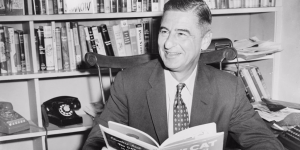
Say hello to Dr. Seuss, a rhymer of rhymes both tight and loose. A BRI favorite he really is; the following story is really his.
Vital Stats
Born: March 2, 1904
Died: September 25, 1991, age 87
Real Name: Theodore Seuss Geisel
He adopted “Seuss” as his writing name during Prohibition, while attending Dartmouth College. The reason: He was caught with a half-pint of gin in his room and was told to resign as editor of the college humor magazine as punishment. Instead, he just stopped using Geisel as a byline.
Years later, he added “Dr.” to his name “to sound more scientific.” He didn’t officially become a doctor until 1956, when Dartmouth gave him an honorary doctorate.
Career Stats
Accomplishments: He wrote 48 books, selling more than 100 million copies in 20 languages. (Including four of the top 10 bestselling hardcover children’s books of all time: The Cat in the Hat, Green Eggs and Ham, Hop on Pop, and One Fish, Two Fish, Red Fish, Blue Fish.)
As a filmmaker, he won three Oscars—two for documentaries made in the 1940s (Hitler Lives, about Americans troops, and Design for Death, about Japanese warlords), and one in 1951 for animation (Gerald McBoing-Boing). By that time, he had written four kids’ books and turned down Hollywood screenplay offers in order to keep writing them.
In 1984 he won the Pulitzer Prize for his contribution to children’s literature. Flops: Only one—a novel called The Seven Lady Godivas, an “utterly ridiculous retelling of the story of Lady Godiva” that was first published in 1937 and republished 40 years later. He always wanted to write The Great American Novel…but the book bombed in 1977, too.
How He Got Started
He was working as a cartoonist in the late 1920s for Judge magazine. One of his cartoons “showed a knight using Flit insecticide to kill dragons.” Someone associated with Flit’s ad agency (McCann-Erikson) saw the cartoon and hired Geisel. For the next 10 years he created ads for Flit and other Standard Oil products. His greatest claim to fame at the time: a well-known ad phrase, “Quick Henry, the Flit!”
His contract with McCann-Erikson allowed him to write and publish books for kids, so he wrote To Think That I Saw It on Mulberry Street. It was turned down by 27 publishers. Said Seuss: “The excuse I got for all those rejections was that there was nothing on the market quite like it, so they didn’t know whether it would sell.” Vanguard Press finally picked it up in 1937, and it was an immediate success. So he quit the ad agency and began writing kids’ books full-time.
How He Got His Ideas
“The most asked question of any successful author,” Seuss said in 1989, “is ‘How do you get your ideas for books?’ ” Over the years he did reveal a number of his inspirations:
Horton Hatches the Egg
“Sometimes you have luck when you are doodling. I did one day when I was drawing some trees. Then I began drawing elephants. I had a window that was open, and the wind blew the elephant on top of the tree; I looked at it and said, ‘What do you suppose that elephant is doing there?’ The answer was: ‘He is hatching an egg.’ Then all I had to do was write a book about it. I’ve left that window open ever since, but it’s never happened again.”
Green Eggs and Ham
Bennett Cerf, the founder and publisher of Random House, bet Geisel $50 that he couldn’t write a book using just 50 words.
Geisel won the bet. “It’s the only book I ever wrote that still makes me laugh,” he said 25 years later. He added: “Bennett never paid!”
The Lorax
Dr. Seuss’s favorite book, he said, “is about people who raise hell in the environment and leave nothing behind.” He wrote the story on a laundry list as he sat at a hotel pool in Kenya, watching a herd of elephants with his wife. “I wrote it as a piece of propaganda and disguised the fact,” he told a reporter. “I was on the soapbox. I wasn’t afraid of preaching—but I was afraid of being dull.”
Yertle the Turtle
“Yertle the Turtle is Adolf Hitler.”
The Cat in the Hat
In the early 1950s, novelist John Hersey was on a panel that analyzed how reading was taught in a Connecticut school system. In May 1954, Life magazine published excerpts of the panel’s report (called “Why Do Students Bog Down on the First R?”). In it, Hersey wrote that one of the major impediments to learning was the dull “Dick and Jane” material students were given—especially the illustrations. Kids, he said, should be inspired with “drawings like those wonderfully imaginative geniuses among children’s illustrators, Tenniel, Howard Pyle, Dr. Seuss.”
A textbook publisher read the article and agreed. He contacted Dr. Seuss and asked him to create a reading book. The publisher sent Seuss a list of 400 words and told him to pick 220 to use in the book. The reason: People felt this was the maximum that “kids could absorb at one time.”
“Geisel went through the list once, twice and got nowhere,” reports Parents magazine. “He decided to give it one more shot; if he could find two words that rhymed, they’d form the title and theme of the book. Within moments, cat and hat leaped off the page. But then it took him 9 months to write the entire book.”
The post Interesting Facts about Dr. Seuss appeared first on Trivia Books and Facts | Uncle John's Bathroom Reader.
March 21, 2017
Box-Office Bloopers

Our latest installment of goofs from some of Hollywood’s most popular movies.
The Big Lebowski (1998)
Scene: In the opening scene, a bowler attempts to convert a 7-10 split.
Blooper: A close-up shows the split being picked up with a different-colored bowling ball.
Cast Away (2000)
Scene: Chuck Noland (Tom Hanks) cuts his hand while trying to build a fire. Angry, he picks up a boxed volleyball with his bloodied hand and throws it.
Blooper: A little later, when Chuck picks up the volleyball and removes it from the box, the handprint is facing upward. This would have been impossible because the box was on the ground when he picked it up—the handprint should be facing down.
The Royal Tenenbaums (2001)
Scene: Chas (Ben Stiller) shows Royal (Gene Hackman) that a BB is still lodged in Chas’s hand from years ago when Royal shot him.
Blooper: The close-up shows a watch on Chas’s wrist; in the wider shots, he isn’t wearing a watch.
As Good As It Gets (1997)
Scene: Carol (Helen Hunt) is riding on a bus.
Blooper: As the camera pans away, it reveals a sign on the side of the bus that says “Subway Shuttle—Not In Service.”
The Shawshank Redemption (1994)
Scene: Warden Norton (Bob Gunton) offers Tommy (Gil Bellows) a cigarette.
Blooper: Although the scene takes place in the 1960s, the cigarette pack is clearly marked with the slogan “Marlboro Miles,” a campaign that Marlboro ran in the 1990s.
Breakfast at Tiffany’s (1961)
Scene: Every scene with the cat(s).
Blooper: There are two different cats playing the same cat. Not an uncommon practice when filming animals—except in this case one is a yellow mackerel tabby and one is a yellow classic tabby.
Star Wars: Episode III–Revenge of the Sith (2005)
Scene: Anakin (Hayden Christensen) arrives on Mustafar and pulls his hood over his head.
Blooper: The shot clearly reveals Anakin has two normal hands, even though one of his arms was chopped off in the previous film and, up until this point, he had a robotic arm.
Batman Begins (2005)
Scene: The Batmobile is racing across the rooftops of Gotham City while confused cops are trying to figure out what it is.
Blooper: On a rooftop, a police officer yells into his bullhorn, ordering the Batmobile not to move. A bit later, another officer on the street says into his radio: “Can you at least tell me what it looks like?” Both cops are played by the same actor.
Spider-Man 3 (2007)
Scene: At the very beginning of the movie, Mary Jane (Kirsten Dunst) sings a song on stage at a jazz club.
Blooper: We hear the audience applauding wildly…but we see them sitting completely still.
Finding Nemo (2003)
Scene: In an early scene, Marlin (Albert Brooks) and his wife Coral (Elizabeth Perkins), both clownfish, are about the same size.
Blooper: Female clownfish are actually twice as big as the males.
The Fifth Element (1997)
Scene: Leeloo (Milla Jovovich) is reconstructed from a strand of DNA. She is said to be pure—the “perfect being.”
Blooper: Throughout the rest of the movie, Leeloo’s “perfect” red hair reveals changing lengths of brown roots.
The post Box-Office Bloopers appeared first on Trivia Books and Facts | Uncle John's Bathroom Reader.
How to Talk Scouse
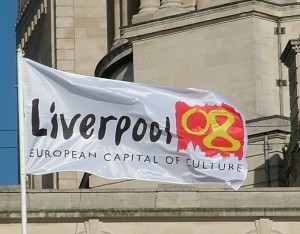
England is a relatively small country, but it boasts a surprisingly high number of variations of the English language—accents, dialects, and, of course, slang. Here’s a look at Scouse, the uniquely colorful (and often inscrutable) jargon specific to the Beatles’ old stomping grounds of Liverpool, where “Scouse” is also the name many people call themselves.
Goin’ the ozzy:
to be treated in the hospital.
Wool:
someone from the rural outskirts of Liverpool.
Arl fella:
one’s father.
Ye ma:
someone else’s mother.
Antwacky:
old-fashioned.
Butty:
a sandwich.
Clobber:
clothing.
Kecks:
pants.
Trabs:
sneakers.
Jarg:
of poor quality.
Beaut:
an idiot.
Texan:
an arrogant idiot.
Soft lad:
an affectionate name for an idiot.
Meff:
someone who smells bad and dresses poorly.
Manc:
a worker in the local cotton mills.
Sozz:
“Sorry.”
Ta:
“Thanks.”
Sweve on it:
“Don’t bother.”
Do one:
“Scram!”
Deffo:
“Definitely!”
Ar ‘ey:
“Oh no!”
Come ‘ead:
“Let’s do it!”
Ye wha?
“Come again?”
Bevvy:
a drink, particularly beer.
Bevvied up:
drunk.
On one:
reckless.
Rocket:
the beginning and end of the local M62 motorway (or freeway).
Bizzies:
police.
Down the banks:
to tell someone off in public.
Jib him off:
to skip out on plans without telling anyone.
Geggin’ in:
when an uninvited guest invites themselves along.
Sagging off:
playing hooky, staying home.
On me bill:
to be alone.
Cracking the flags:
the weather is warm.
Boss:
something that’s very good.
Made up:
the state of being very happy.
Scratch:
welfare.
Scally:
Liverpool youth.
Gerry and his ferry:
1960s Liverpool band Gerry and the Pacemakers, who had major international success with the hit “Ferry Cross the Mersey.” (The Mersey is the river that runs through Liverpool.)
Plazee Scouser:
someone who speaks with a fake Liverpudlian accent and uses Scouse slang in order to seem like an authentic.
The post How to Talk Scouse appeared first on Trivia Books and Facts | Uncle John's Bathroom Reader.
March 20, 2017
RIP Chuck Berry
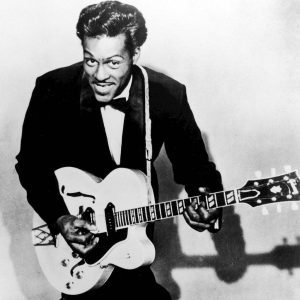
Over the weekend, Chuck Berry died at the age of 90. Here are some facts you may not have known about one of the architects of rock n’ roll.
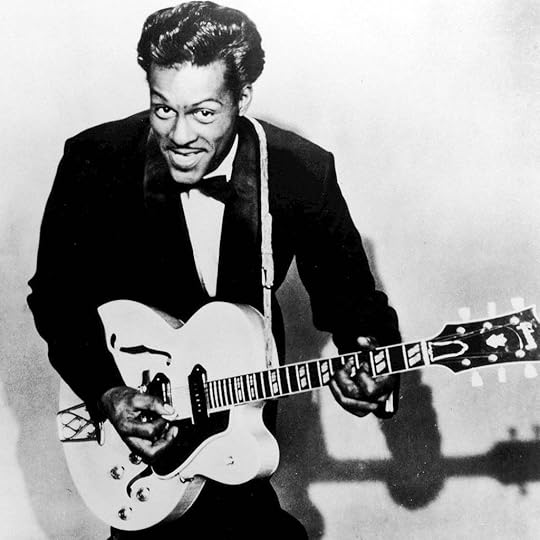
Berry came up in an era in which record labels, music publishers, and concert promoters mercilessly cheated musicians—especially African-American musicians. Result: Berry always demanded to be paid for his performances beforehand…in cash.
Another performance contingency: The concert venue had to be close to an Indian restaurant.
Berry influenced pretty much every rock guitarist that came after him, but who influenced him? A teenage guitarist named Tommy Stevens. They were classmates in St. Louis, and they teamed up to perform a song called “Confessin’ the Blues” on the school’s stage. Berry sang, but Stevens’ soulful, technically proficient guitar playing made Berry want to learn to play the guitar, too.
Berry’s classic “Johnny B. Good” takes its inspiration from Johnnie Johnson, an early collaborator and bandmate of Berry. Johnson wrote songs on the piano, and then Berry would transcribe them to guitar and add in the lyrics. They first worked together in 1953 in Johnson’s band the Sir John Trio.
In 1956, Berry invented one of the most famous stage moves in rock n’ roll history. Nicknamed “the Duck Walk,” he was actually trying to hide the wrinkles in the rayon suit he was wearing.
Berry is strongly associated with the 1950s, but he enjoyed the biggest hit of his career in 1972. Naturally, it was something of a fluke. Berry performed the obscure, double entendre-laden 1950s novelty song “My Ding-a-Ling” live at a music festival, and it was recorded. A Boston disc jockey got a hold of the song and started playing it on the air. The song went all the way to #1, the only chart-topper of Berry’s life.
Berry was among the first class of nominees voted into the Rock and Roll Hall of Fame in 1986. When the actual facility housing the Rock and Roll Hall of Fame opened in Cleveland in 1995, organizers held the first Concert for the Rock and Roll Hall of Fame, a seven-hour jam session for the ages featuring inductees past, present, and future. Bruce Springsteen and the E Street Band served as the backing band for Berry, winding up their set with Berry’s classic “Rock and Roll Music.” At one point, Berry started improvising without giving any indication to Springsteen and the other musicians that he was going to do so, forcing them to fall in line as he rapidly changed keys four or five times. By the end of the chaos, the band itself was playing in multiple different keys. Having successfully pranked the band, Berry “duck walked” off the stage, into a car, and off to his hotel.
The post RIP Chuck Berry appeared first on Trivia Books and Facts | Uncle John's Bathroom Reader.







